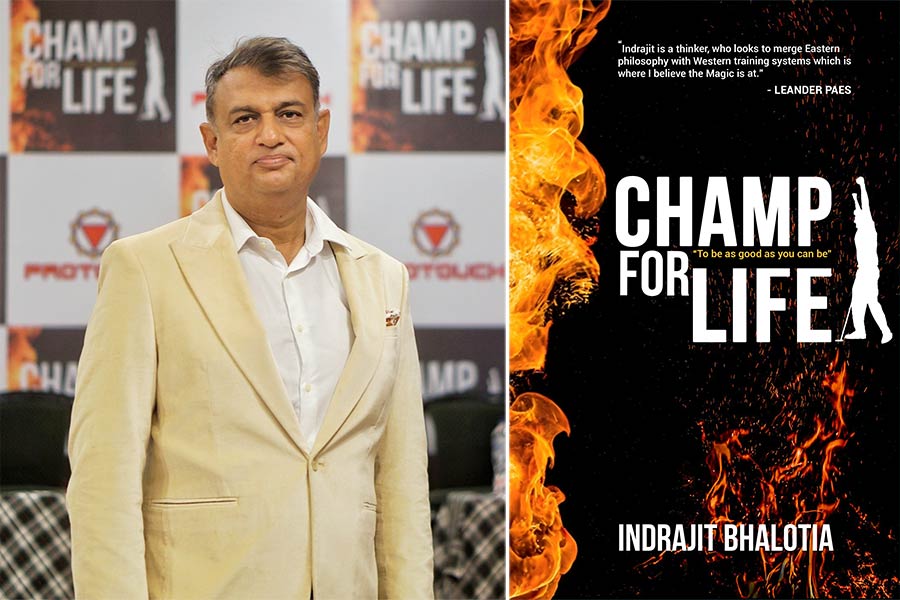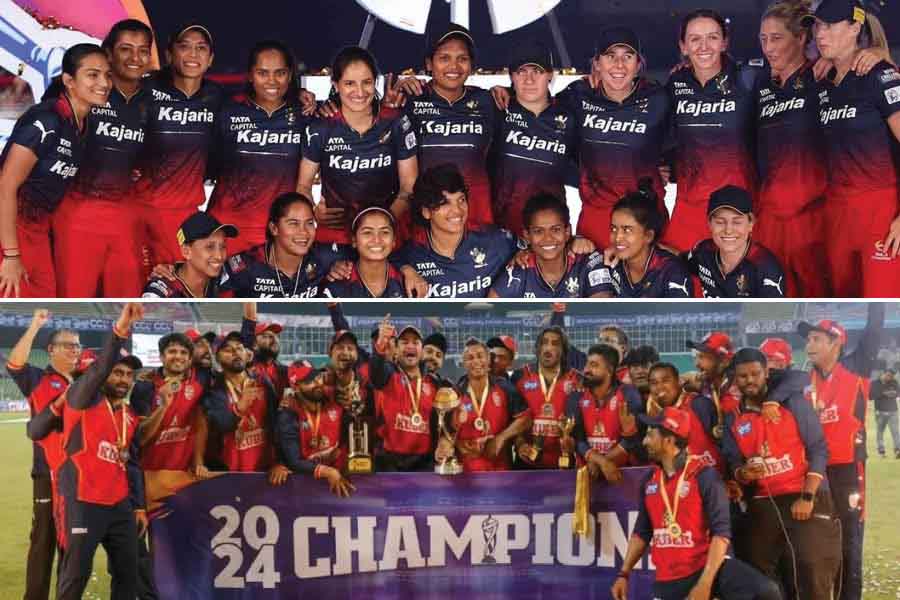The Sharmas are a well-to-do family staying on Lord Sinha Road, opposite AC Market in Kolkata. The three generations of men in the household share an easy chemistry, a sort of camaraderie that is not always common in joint families these days. Gopi Ram, 81, is a retired advocate and tax consultant whose eyes radiate curiosity. His son, Kamal Kumar, 57, is also an advocate, given to bouts of wry humour. Kamal’s son and Gopi’s grandson, Harshvardhan, 35, is a real estate project manager and (by some distance) the quietest and calmest of the lot. What unites them, apart from familial ties, is their obsession with lawn bowling, a sport that is as engaging as it is esoteric.
When Harshvardhan won silver for Bengal at the 37th National Games in Goa last November, he extended his family’s list of laurels in lawn bowling into the third generation. Back in 2014, Kamal had represented India at the Commonwealth Games in Glasgow (alongside family friend Samit Malhotra). A subsequent holder of silver and bronze medals at the Asia Lawn Bowls Championships, Kamal is a serial winner at the National Games and currently serves as the vice-president of the Rajasthan Bowling Association. Kamal’s younger brother, Manoj Sharma, has also played the sport for more than 30 years. As for Gopi, he was an integral part of the first Indian lawn bowling contingent at the Commonwealth Games in 1990 in Auckland, two years before participating in the Men’s Woolwich World Outdoor Bowls Championship in Worthing, England. Between 2011 and 2014, Gopi was the secretary general of the Bowling Federation of India (BFI), having been one of the architects behind the organisation’s establishment in the first place.
The first family of lawn bowling in Bengal
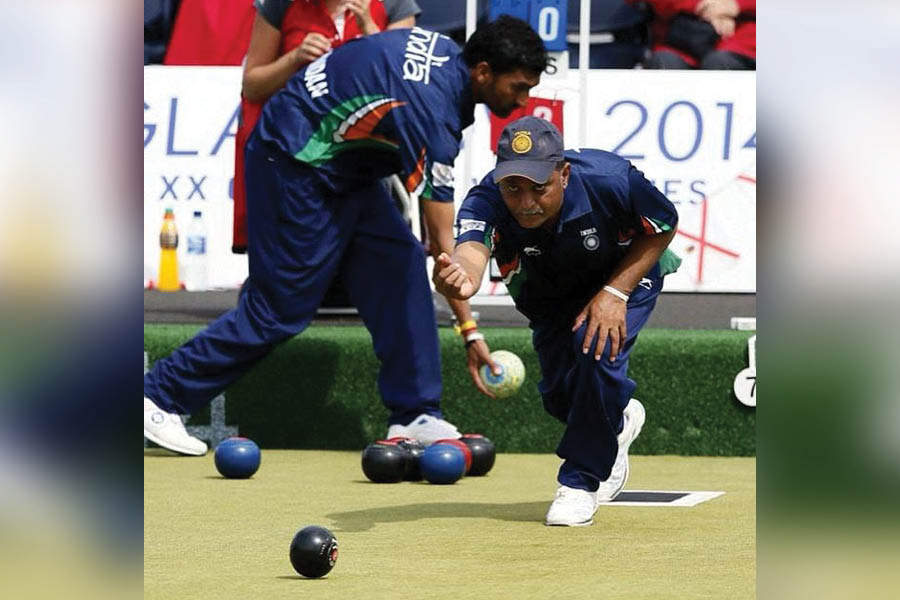
Kamal in action during the 2014 Commonwealth Games in Glasgow Harshvardhan Sharma
Looking at the history of the Sharmas, it is tempting to draw parallels with the Amarnaths in cricket or the Maldinis in football. But sporting success as a family tradition becomes a different kind of challenge when the sport itself is as niche as lawn bowling, wth 57 member countries (of The World Bowls Federation) and a minuscule presence in India. Despite the Indian women’s unit winning gold at the 2022 Commonwealth Games in Birmingham, lawn bowling has not yet been professionalised in India. Kolkata itself has a dearth of facilities, with the real estate required for the sport hard to come by. But the Sharmas, all of whom first fell in love with lawn bowling at the Royal Calcutta Golf Club (RCGC), are not put off by the odds.
“When I first saw my dad play, I was bemused. What kind of sport is this? But then, as I invested more and more time, I realised how fascinating and addictive it is,” recalls Kamal, who took up lawn bowling as a teenager in 1984. “It’s not a sport for TV, but once you understand its nuances, it’s compelling,” adds Kamal. In essence, lawn bowling (often called lawn bowls or just bowls), is about rolling a ball (the bowl) on a rink (each rink is a vertical segment of the bowling green or the lawn, which can be natural grass or astroturf) covered with a mat to hit a target (the jack). The bowl is so designed as to be ‘biased’, which means it never rolls in a straight line. Lawn bowling can take place across singles, pairs, triplets and fours, with points in each category awarded once all the bowls have been rolled by the players or the teams. For a more detailed understanding of lawn bowling and its rules, see this.
‘Lawn bowling is a great family sport that people of any age group can play’
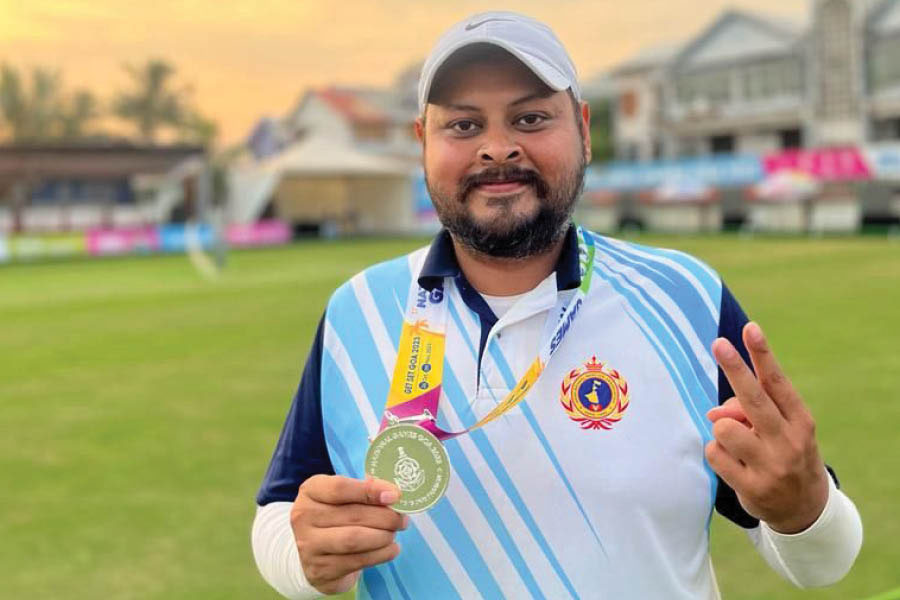
Harshvardhan won silver for Bengal at the 37th National Games in Goa last year Harshvardhan Sharma
Despite having ‘bowling’ in its name, lawn bowling does not have much in common with its more popular cousin, pin bowling, believes Harshvardhan: “They are very different sports. In lawn bowling, you need a lot of patience. As well as accuracy and focus.” Gopi agrees, before explaining: “It’s a line and length sport, which is also very friendly and social in nature. That’s why it’s a great family sport that people of any age group can play.” While Gopi is no longer an active player himself, he remains a keen onlooker during matches. Kamal and Harshvardhan (who is also into darts), play almost every day, blurring the lines between practice and passion. But which of the three is the best? “That’s me, I’m the best player in the family,” answers Kamal nonchalantly, with neither his father nor his son expressing any disapproval. “He’s probably right,” suggests Devesh Srivastava, 55, the president of the West Bengal Bowling Association, the coach of the Bengal team and a family friend of the Sharmas. Devesh himself is a multi-medal winner in lawn bowling at the national level, as is Manisha Srivastava, his wife.

Devesh Srivastava with Kamal, his long-time friend Amit Pramanik
“In Bengal, we’re very good at playing on natural greens, but not so much on carpet. To really expand the sport, we need better infrastructure and more government funding. It’s not a cheap sport, after all. It takes more than a crore just to put up a turf,” says Devesh, who thinks that a franchise tournament for lawn bowling (along the lines of the IPL and the ISL) can be a gamechanger in India, especially because “the sport is getting younger, with the average age of the players decreasing in the past few years”.
‘It’s just a sport… You lose today, you’ll win tomorrow’
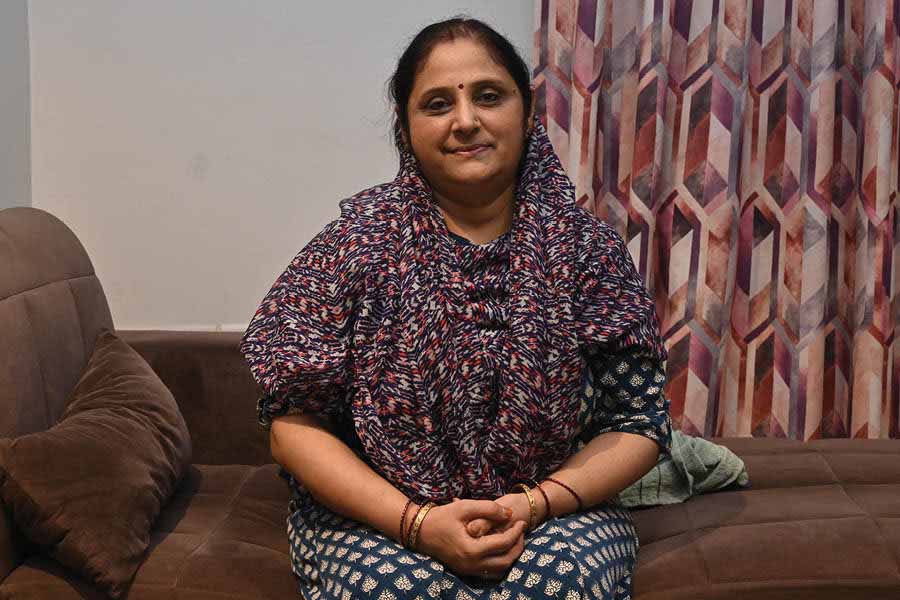
Sangita Sharma has been following lawn bowling ever since she got married to Kamal Amit Pramanik
Watching the men speak from a distance is Sangita Sharma, who first heard of lawn bowling right after her marriage to Kamal. “I’ve been following the sport for 35 years and it’s always great to see these men excited and celebrating their victories. At the same time, when they don’t win, they can get really demoralised. That’s when I remind them that it’s just a sport. You lose today, you’ll win tomorrow,” says Sangita, who is hoping her son can soon replicate her husband and father-in-law by playing for India.
“I don’t feel any pressure because of my surname,” claims Harshvardhan, who used to be a prolific cricketer at club and division level before switching to a sport with much bigger balls (no pun intended). The only third-generation bowler at RCGC and, quite possibly, in all of Bengal, Harshvardhan feels grateful to be a part of a family where inspiration is never far away and nor is guidance. “It’s a sport where you’re learning every single day, for so much of playing is about anticipating and pre-empting. Yes, skill matters, but if you want to win, you need to know how to strategise properly,” says Kamal, who regards Jharkhand to be the strongest state in lawn bowling right now.

Among the three of them, the Sharmas have played lawn bowling for close to 45 years Harshvardhan Sharma
The Sharmas are aware that their position in India’s lawn bowling ecosystem is both a privilege and a responsibility. Even as they look to enrich their family legacy, they carry the mantle of growing a sport that is stuck in its formative phase. “We’re glad to be where we are, but there’s so much more to do, so much farther to go,” acknowledge the three generations. With the hope that by the time their fifth or sixth generations come around, much of the rest of the country gets as obsessed with lawn bowling as the Sharmas.

